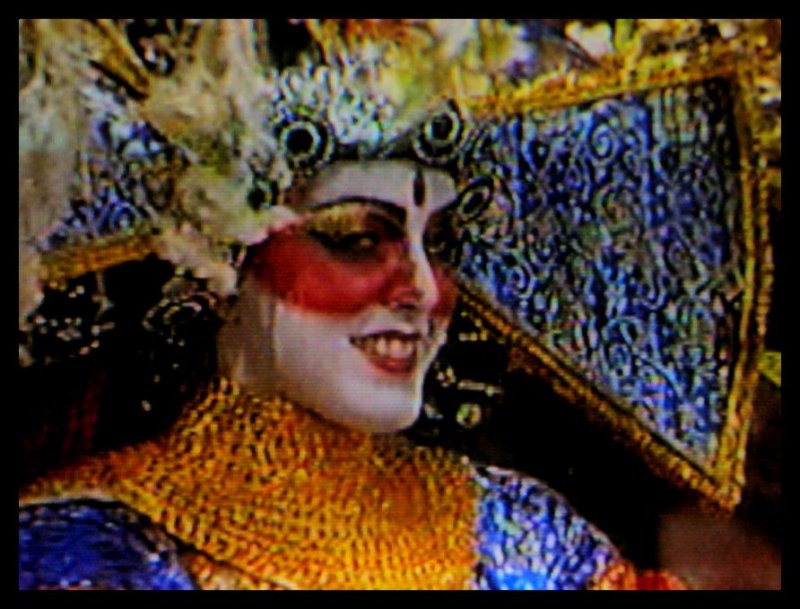I hope everything so far has been easy to understand. But I'll be going over and repeating some things as well so they're not forgotten or misunderstood.
For those who are unfamiliar with this very useful item, I want to introduce the EV function on your camera. EV stand for Exposure Value and the button or menu option is called the Exposure Compensation, or Exposure Bias. Here's the icon, which is a square with plus and minus signs inside.
 You may find this icon stamped on the arrow pad on the back of your camera as in Fig, 17.
You may find this icon stamped on the arrow pad on the back of your camera as in Fig, 17.

When that upper arrow is pressed, it produces a new icon in the top right corner of the LCD screen as in Fig. 18, where a black rectangle shows 0.0 and two blue right/left arrows. That tells you that you are now able to use the EV function, and by pressing the right and left sides of the arrow pad you will either increase or decrease the value which will appear in that top right corner of the screen. The increments go up to plus or minus 2 in steps of 1/3 or 1/2. Example: +0.3, +0.7, +1.0 etc. up to +2 (or minus when using that arrow pad.)
So for what is that used? In short, you can manually lighten or darken the picture you see in the viewfinder before shooting by using this setting. Sometimes when your subject is dark against a bright background, the light meter adjusts the overall setting for the brightness, leaving your subject too dark. In that case you would (on my camera here) press the right side of the arrow pad as in Fig. 18a. Now you see the number in the top right screen corner has changed to +0.3 to brighten the picture. If I were happy with that, I would then press the OK button in the centre of the arrow pad and then press the shutter to take the picture. If I wanted the picture to be lighter still, I would press the arrow pad twice instead of once, which would give me +0.7.
In the case where the overall picture was too bright and the subject was going to look lighter than I would like, then I'd press the left arrow and that would give me a minus value, darkening the photo Fig. 18b.
You can often counter an over exposure by using a -0.3 setting, especially outdoors where it is often so bright that your photos can look a little overexposed. I keep my cameras set at -0.3 for nearly all my outdoor photos.


Here is where I find the EV option on my little pocket Stylus. By pressing the main menu in the centre of the back arrow pad I get these four options in Fig. 19. On this camera one presses the top and bottom arrows to lighten or darken the picture. Fig. 20. In Fig. 21 you see the EC has been set to +0.7. I show the example of this second camera only to illustrate that you may have to look in more than one place to find the EV function on your camera.
I was setting up to illustrate the differences in EV settings and found another good use for a small bag of dry catfood! Fig. 22.
Together with a clothespeg and a sheet of white paper it makes an idea reflector for the small object on the table.
I changed my mind and used some orange poster paper as a backdrop for the following photos.
So here are some examples of how a picture looks when taken at different EV values, ranging from 0.0 in Fig. 23 up to +0.1 in Fig. 26. Fig. 27 is back at 0.0 and Fig. 28 to 30 are minus steps increasingly dark. The first and the fifth are without an EV adjustment.


I just went outside and took some examples with our clerodendrom which was still in partial sunlight. I started with the first example without using any Exposure Compensation and took samples at different minus values of EV. I didn't include them all here but with these five you can see the difference between no adjustment in the first and six steps into the minus scale to -2.0, which is a little too dark. However I do like the effect at -1.0 and -1.3.

All photos on this page were taken using the PORTRAIT setting in the SCENE option. Remember that the icon for portrait is a girl's head.
The indoor photos had a WHITE BALANCE setting of "cloudy".
I hope you will be able to try out some of these options. You can do a lot to correct lighting when using automatic settings by making an adjustment with the EV function.
I have the next chapter ready but I think this is enough for one day. It is a fun one....how to use a paper sweep for seamless backgrounds. Really easy!
Please ask if anything isn't clear. If I know the answer I'll be back with a reply.
Until then, thanks for joining me. I'll be uploading the next installment soon.
Sharon (Canarybird)
(All text and photos copyrighted)








No comments:
Post a Comment